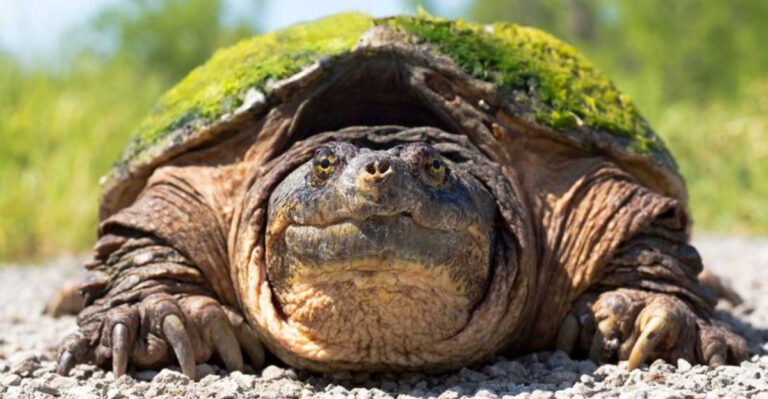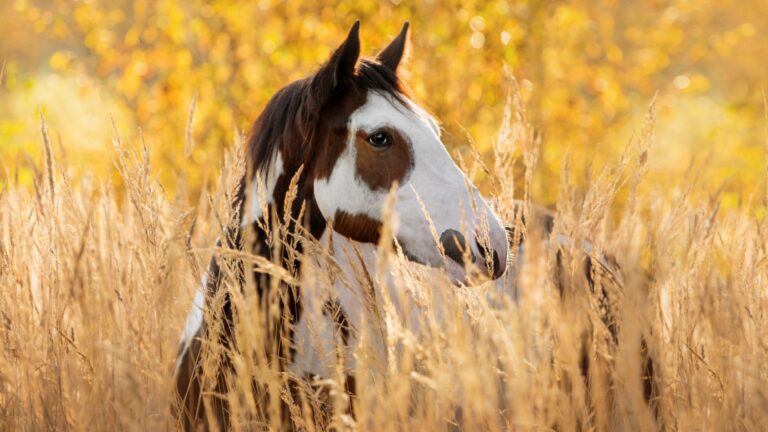What Chameleons Eat: 22 Foods That Make Up Their Diet
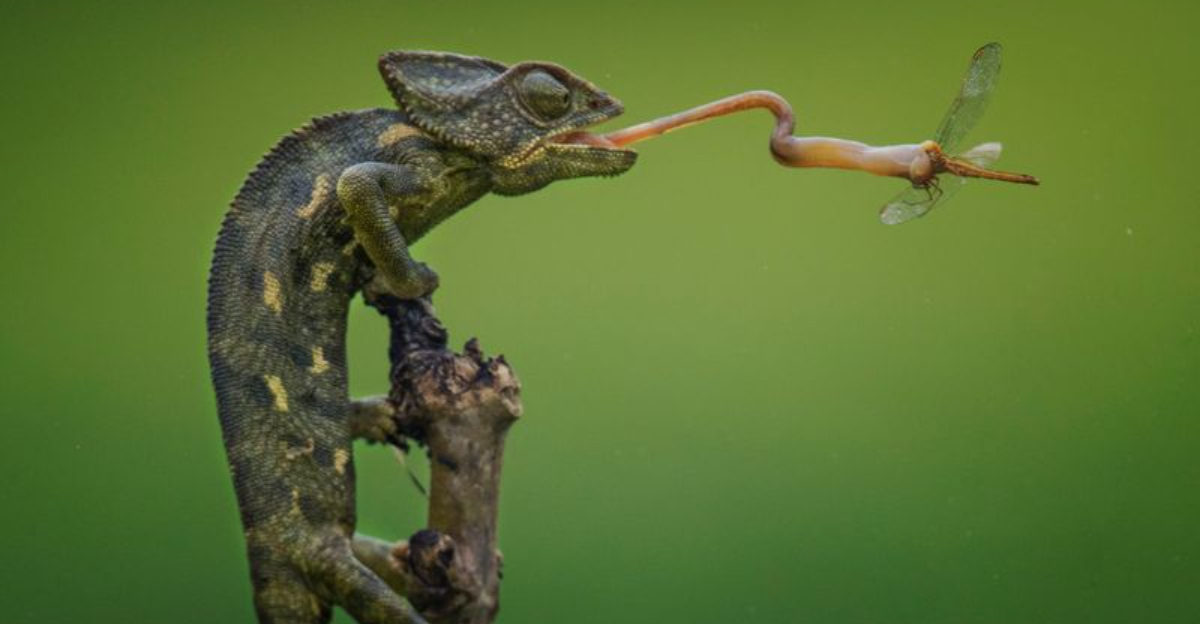
Ever watched a chameleon’s lightning-fast tongue snatch a flying insect from the air? These color-changing reptiles are fascinating predators with surprisingly varied diets.
While insects make up the bulk of what chameleons eat, their menu extends beyond bugs depending on their species, size, and natural habitat. Let’s explore the colorful buffet that keeps these remarkable reptiles thriving!
1. Crickets: The Staple Snack
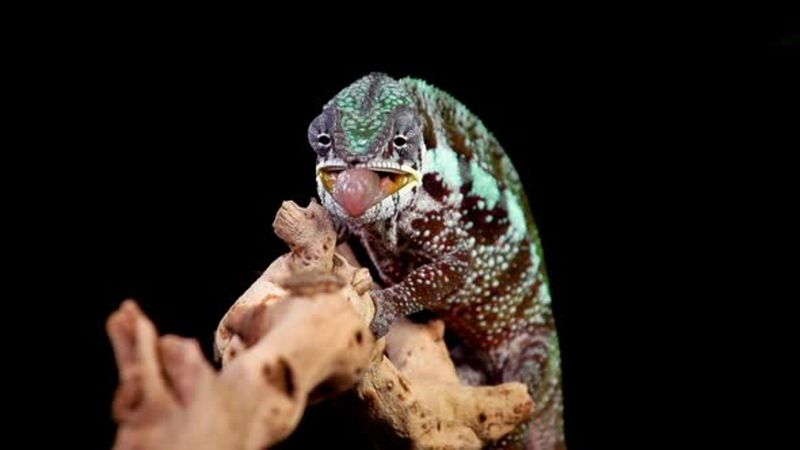
Hopping into first place on the chameleon menu, crickets offer the perfect nutritional package in a convenient, jumping meal. Most pet chameleons eagerly hunt these insects.
Rich in protein and easy to digest, crickets can be gut-loaded with nutrients before feeding, making them even more beneficial for your color-changing friend.
2. Mealworms: Protein-Packed Treats
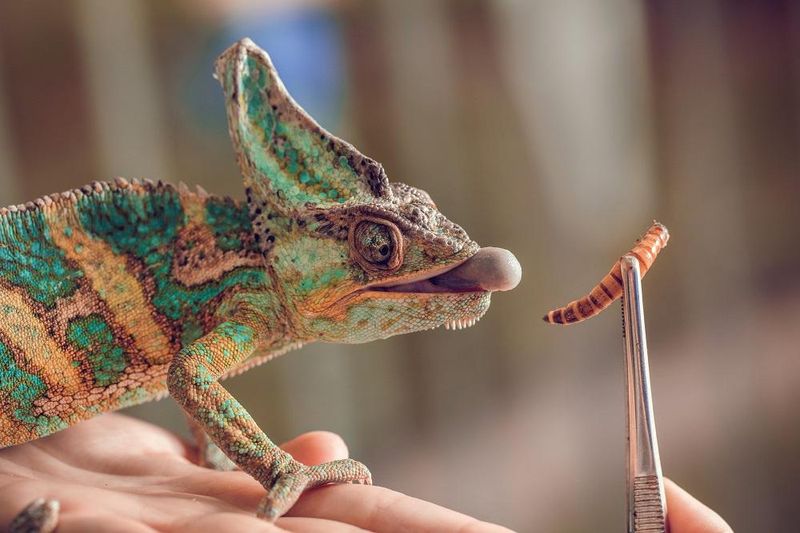
Wiggling their way into the chameleon diet, mealworms serve as nutrient-dense snacks that most species find irresistible. Their soft bodies make them easily digestible for younger chameleons.
While nutritious, these larvae should only be occasional treats due to their high fat content. Too many mealworms can lead to obesity in captive chameleons.
3. Dubia Roaches: Nutritional Powerhouses
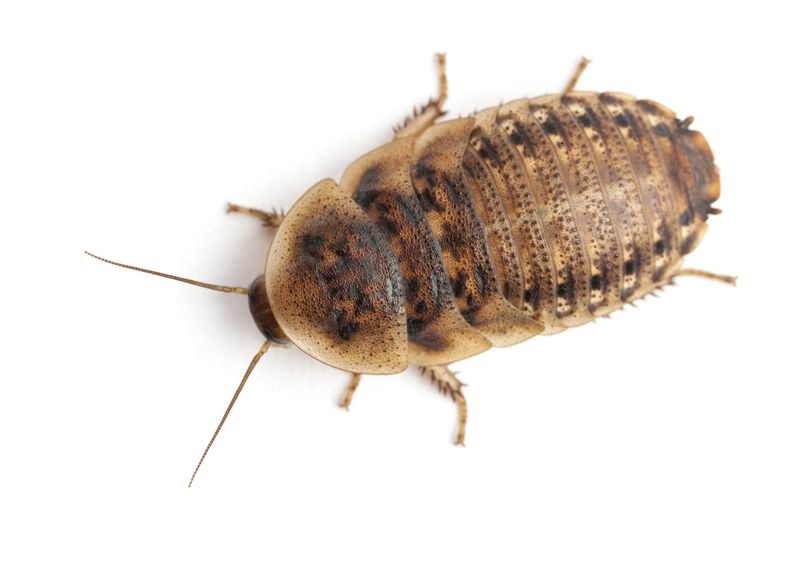
Unlike their pesky household cousins, Dubia roaches are clean, odorless, and packed with essential nutrients chameleons need. Their high protein and low fat content make them superior to many other feeder insects.
Dubia roaches can’t fly or climb smooth surfaces, making feeding time less chaotic. Many chameleon keepers maintain colonies of these nutritional powerhouses.
4. Locusts: Jumping Delicacies
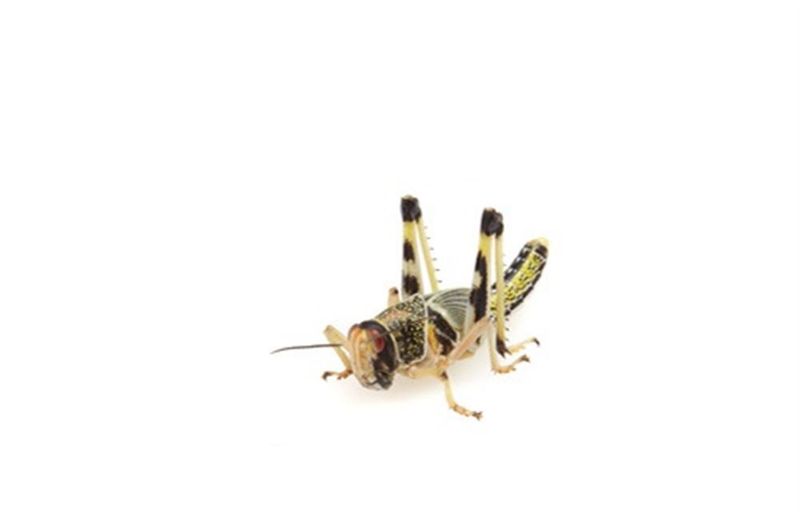
Found naturally in many chameleon habitats, locusts trigger the hunting instinct with their jumpy movements. Their substantial size provides a satisfying meal, especially for larger chameleon species.
These insects offer excellent nutritional value when gut-loaded properly. The chase and capture of these agile insects also provides mental stimulation and exercise for captive chameleons.
5. Waxworms: High-Calorie Indulgences
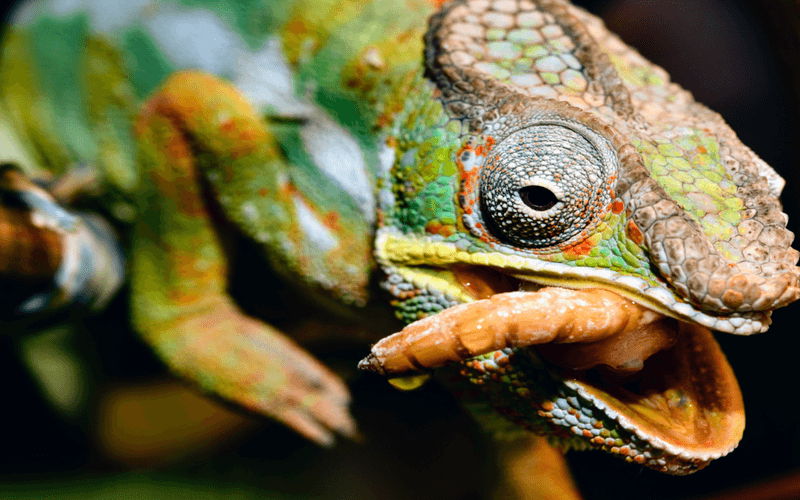
Soft-bodied and rich in fat, waxworms are the chameleon equivalent of ice cream – delicious but best enjoyed sparingly. These larvae are particularly useful for underweight or recovering chameleons needing extra calories.
Their high fat content makes them inappropriate as a dietary staple. Think of waxworms as occasional treats rather than daily nutrition for your scaly friend.
6. Hornworms: Hydrating Blue Bites
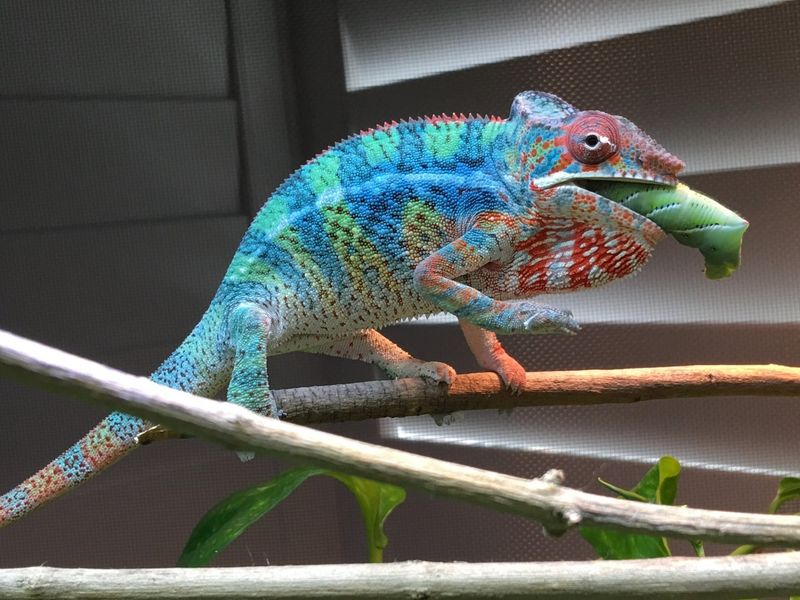
Striking blue in color, hornworms aren’t just visually appealing – they’re also hydration powerhouses for chameleons. These caterpillars consist of nearly 85% water, making them perfect for chameleons needing a moisture boost.
Their soft bodies are easy to digest and rarely cause impaction. Many chameleons show particular enthusiasm when these bright blue treats appear at mealtime.
7. Silkworms: Digestible Delights
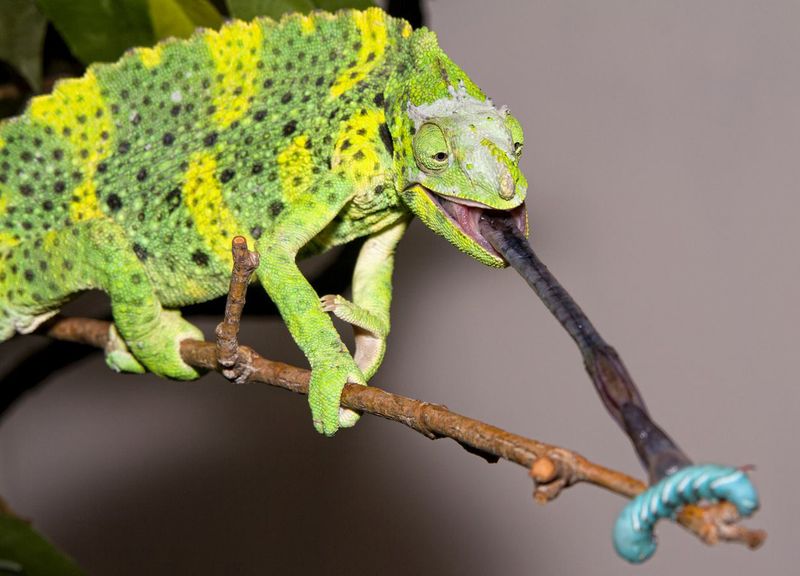
Prized for their exceptional nutritional profile, silkworms boast high protein content with minimal fat. Their soft bodies make them easily digestible even for baby chameleons just learning to hunt.
These larvae contain enzymes that aid digestion and boost immune function. Many breeders consider silkworms among the healthiest feeder insects available for chameleons of all ages.
8. Butterworms: Calcium-Rich Morsels
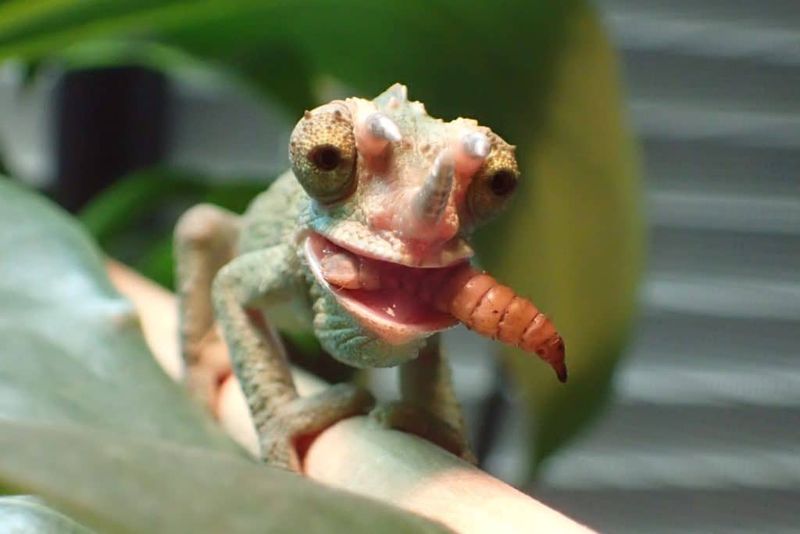
Bright red and wriggling, butterworms naturally catch a chameleon’s eye with their vibrant color. These Chilean caterpillars stand out for their exceptionally high calcium content – a critical nutrient for reptile bone health.
Their sweet smell and taste make them irresistible to picky eaters. However, their high fat content means they should remain an occasional treat rather than a dietary staple.
9. Flies: Fast-Moving Targets
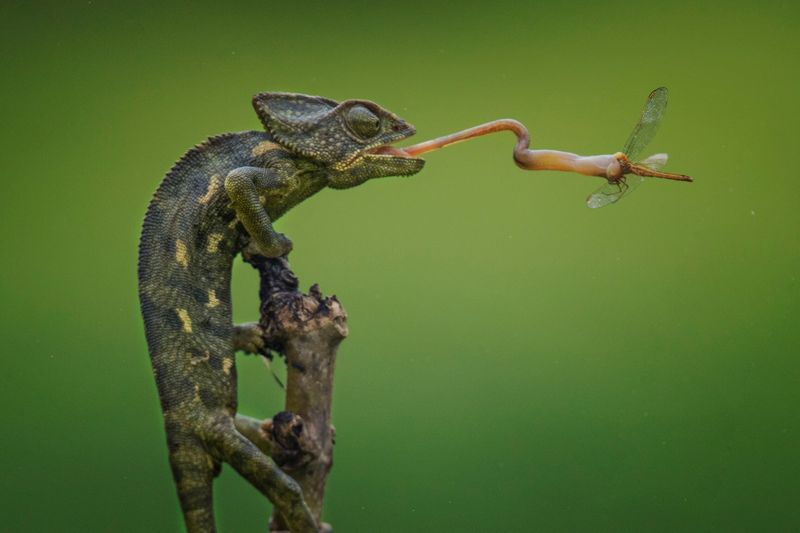
Nothing tests a chameleon’s legendary tongue accuracy like the challenge of catching flies. These zippy insects trigger the predatory instinct and provide excellent hunting practice for chameleons.
In the wild, various fly species make up a significant portion of many chameleons’ diets. Flightless fruit flies are particularly useful for feeding baby chameleons who need smaller prey items.
10. Grasshoppers: Wild Protein Sources
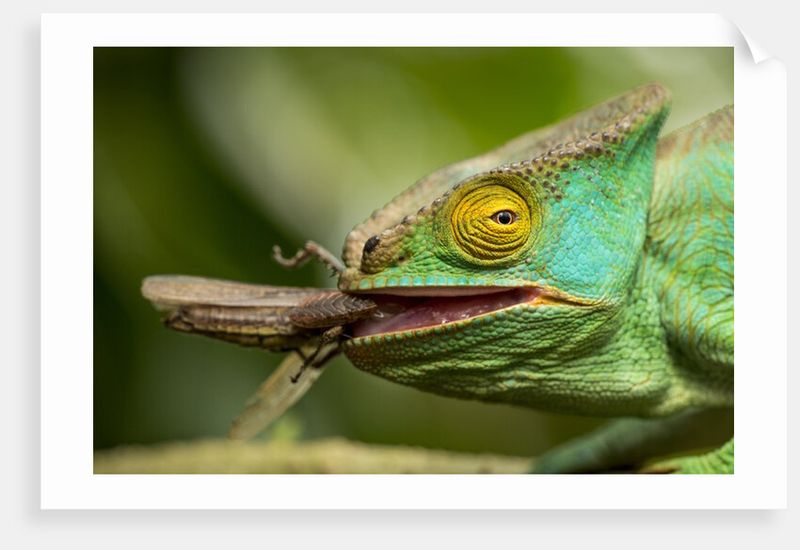
Abundant in chameleons’ natural habitats, grasshoppers provide substantial meals packed with protein. Their jumping behavior triggers hunting instincts, giving captive chameleons mental stimulation along with nutrition.
Wild-caught grasshoppers should never be fed to pets due to potential pesticide exposure. Farm-raised ones make excellent occasional treats for larger chameleon species like panthers and veileds.
11. Superworms: Chitin-Rich Challenges
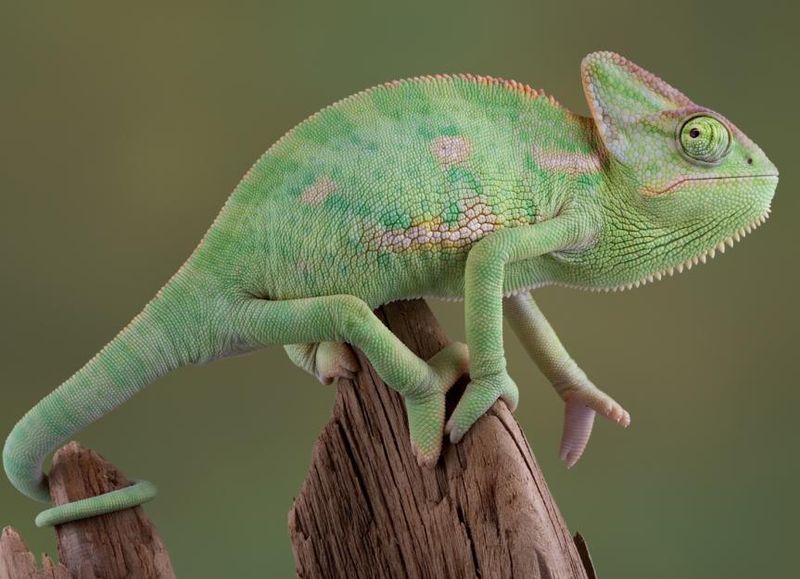
Larger and tougher than regular mealworms, superworms provide a satisfying crunch for adult chameleons. Their hard exoskeletons contain chitin, which may help eliminate intestinal parasites.
These substantial larvae should be reserved for fully-grown chameleons. Their tough outer shells can pose digestion challenges for younger or smaller species, potentially leading to impaction if fed too frequently.
12. Mantids: Occasional Wild Treats
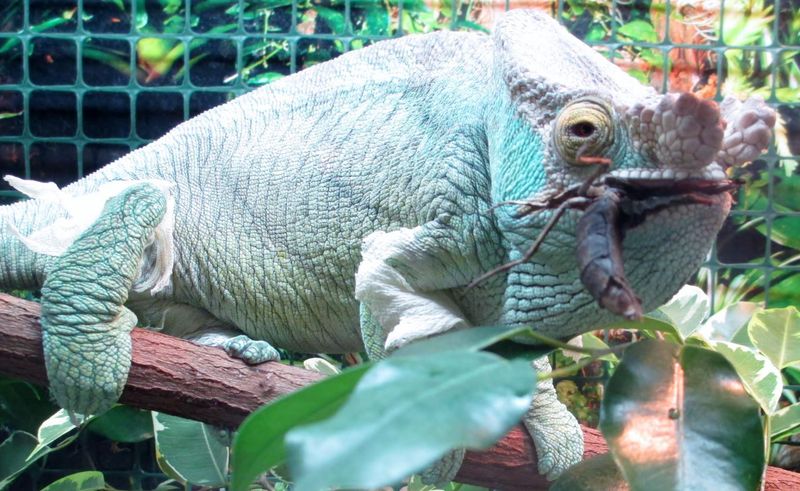
Formidable predators themselves, praying mantids become prey when encountered by larger chameleons in the wild. These insects are nutritionally dense and provide excellent enrichment for chameleons.
Their complex exoskeletons require stronger digestion. While not typically part of captive diets, mantids represent the type of opportunistic feeding wild chameleons engage in regularly.
13. Beetles: Crunchy Supplements
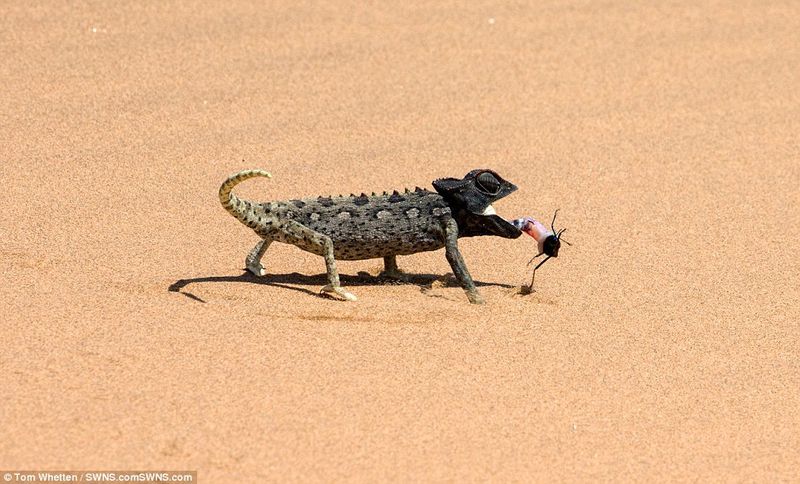
Various beetle species make their way into wild chameleons’ diets, providing diversity and essential nutrients. Their hard exoskeletons present a different texture that exercises jaw muscles and aids dental health.
Some species are commercially bred as feeders. However, their tough shells make them more suitable for larger chameleons with robust digestive systems rather than delicate species.
14. Caterpillars: Soft-Bodied Feasts
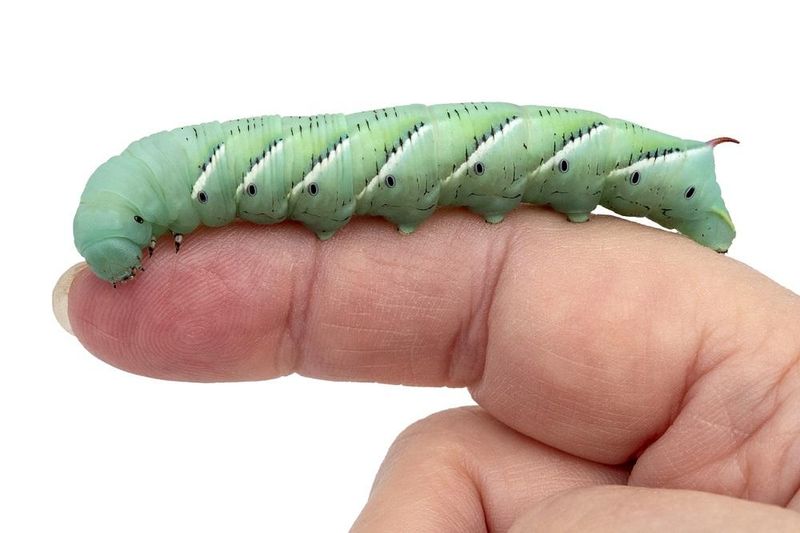
Moving at a pace that makes them perfect targets, caterpillars offer substantial nutrition in an easy-to-catch package. Their soft bodies are gentle on chameleon digestive systems, especially for younger reptiles.
Never feed wild-caught caterpillars, as many species are toxic. Commercially bred varieties like hornworms and silkworms provide the benefits without the risks of poisonous wild species.
15. Small Lizards: Prey for Larger Species
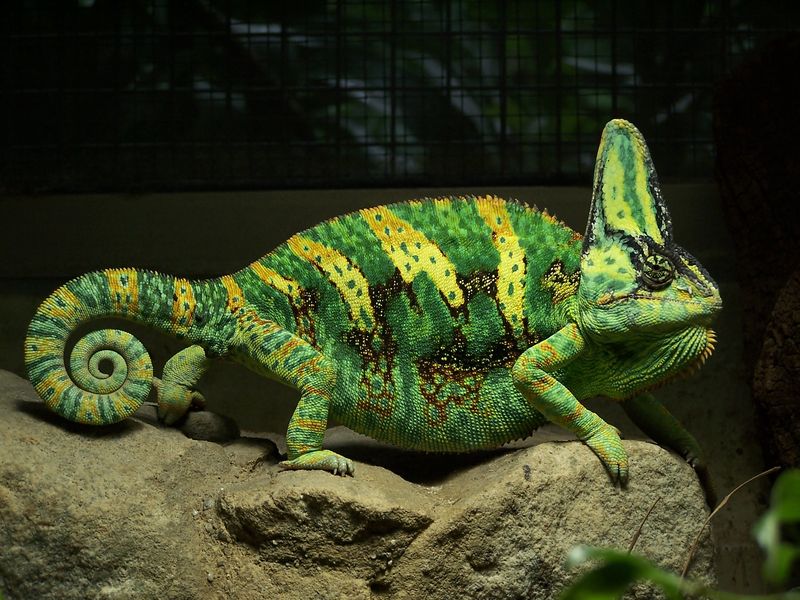
Surprising to many new owners, larger chameleon species occasionally hunt and consume smaller lizards in the wild. This behavior is most common among species like Parson’s and Veiled chameleons.
This predatory behavior showcases the opportunistic nature of chameleons. While not recommended in captivity, this hunting pattern demonstrates why some species should never be housed together regardless of size.
16. Pinky Mice: Rare Supplements
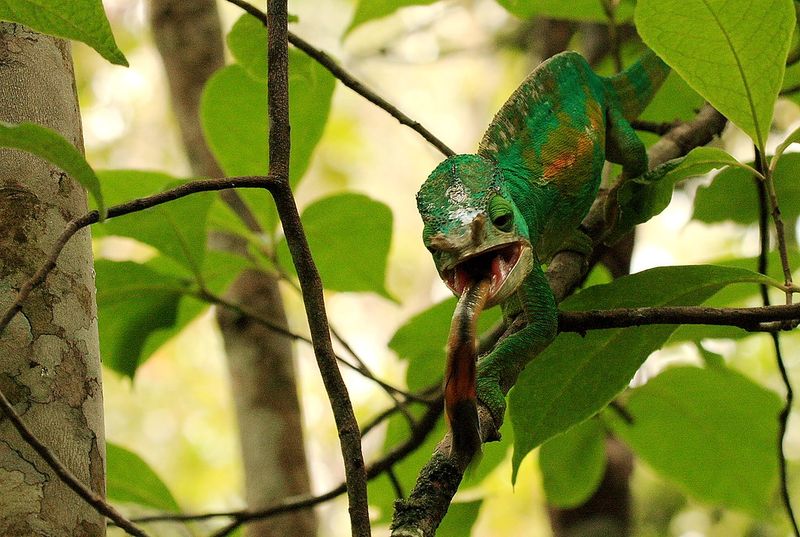
Reserved exclusively for the largest chameleon species, newborn pinky mice occasionally supplement the diet of species like Parson’s chameleons. These provide substantial protein and fat in a single meal.
Most chameleon species neither need nor should consume vertebrate prey. This feeding practice remains controversial among reptile keepers and is generally unnecessary for proper chameleon nutrition.
17. Plant Matter: Surprising Nibbles
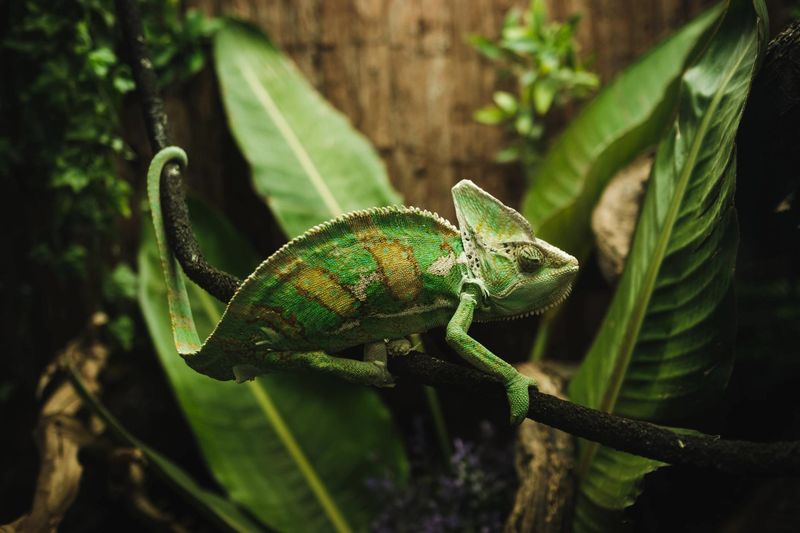
Though primarily insectivores, some chameleon species occasionally nibble on plant material. Veiled chameleons in particular have been observed consuming leaves and flowers in both wild and captive settings.
This plant consumption appears mostly related to hydration needs. Many keepers provide safe plants like pothos or hibiscus in enclosures, which chameleons may occasionally sample alongside their insect diet.
18. Snails: Calcium-Rich Specialties
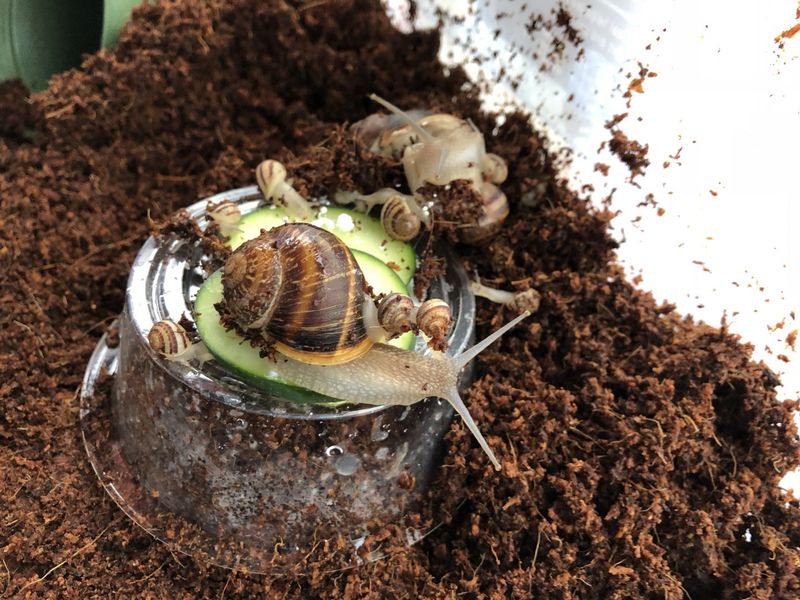
With shells packed with calcium, small snails provide nutritional benefits beyond just protein for some chameleon species. Wild chameleons occasionally consume these mollusks when encountered in their natural habitats.
The shells contribute valuable minerals to their diet. However, captive chameleons rarely receive snails as feeders due to parasite concerns and the availability of safer calcium sources.
19. Phoenix Worms: Calcium-Loaded Larvae
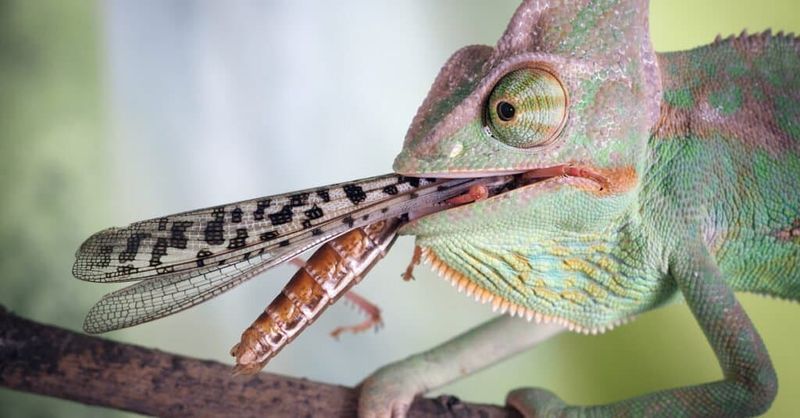
Also known as black soldier fly larvae, these tiny worms pack an impressive nutritional punch. Their standout feature is naturally high calcium content – rare among feeder insects and crucial for chameleon health.
These small larvae are perfect for juvenile chameleons. Their self-cleaning nature means they don’t require gut-loading before feeding, making them convenient options for busy chameleon keepers.
20. Leafy Greens: Occasional Browsing
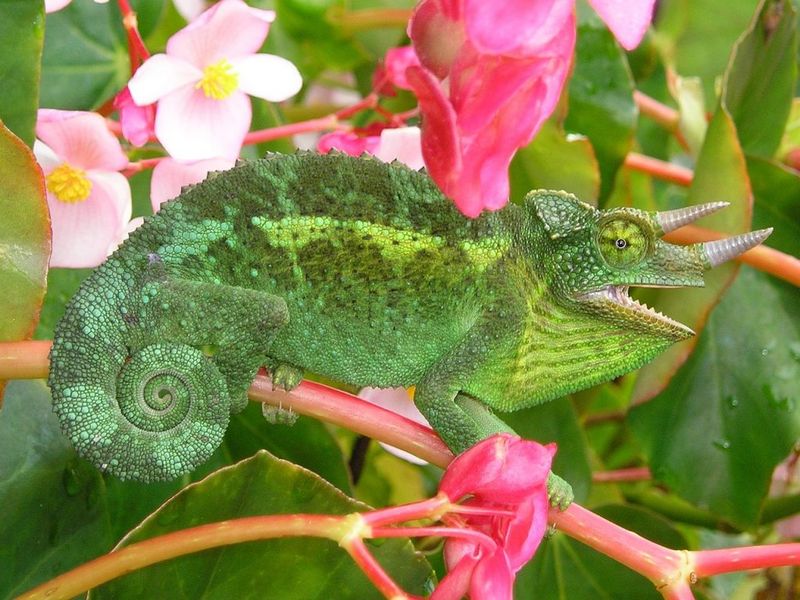
Fresh greens occasionally interest certain chameleon species, particularly veiled chameleons. These plant-based nibbles may provide hydration and fiber rather than substantial nutrition.
Offering pesticide-free greens like collard or mustard occasionally won’t harm chameleons. Some keepers report their veiled chameleons regularly taking bites of leafy vegetables, though this behavior varies widely between individuals.
21. Fruit Bits: Rare Sweet Treats
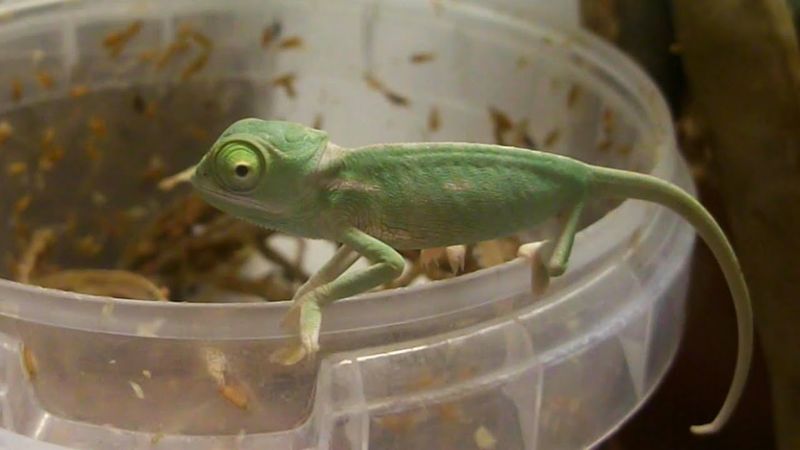
Tiny pieces of fruit occasionally attract curious chameleons, particularly sweeter varieties like mango or papaya. This behavior appears more common in veiled chameleons than other species.
Fruit should never become a dietary staple. Some keepers use small fruit bits to entice reluctant eaters to notice food in their enclosure, but these sweet treats should remain very occasional supplements.
22. Nectar: Sweet Sips
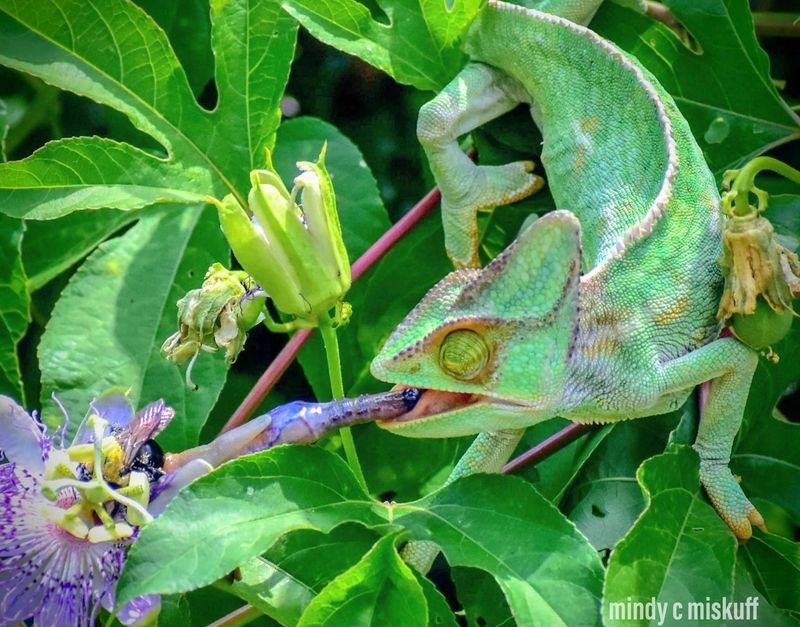
Flower nectar provides a natural sweet treat that some chameleons lap up when encountering blooms in their environment. This behavior has been observed more frequently in veiled chameleons.
In captivity, some chameleons show interest in nectar substitutes. Commercial reptile nectars can provide occasional variety, though they should never replace water or proper insect nutrition in a chameleon’s diet.


